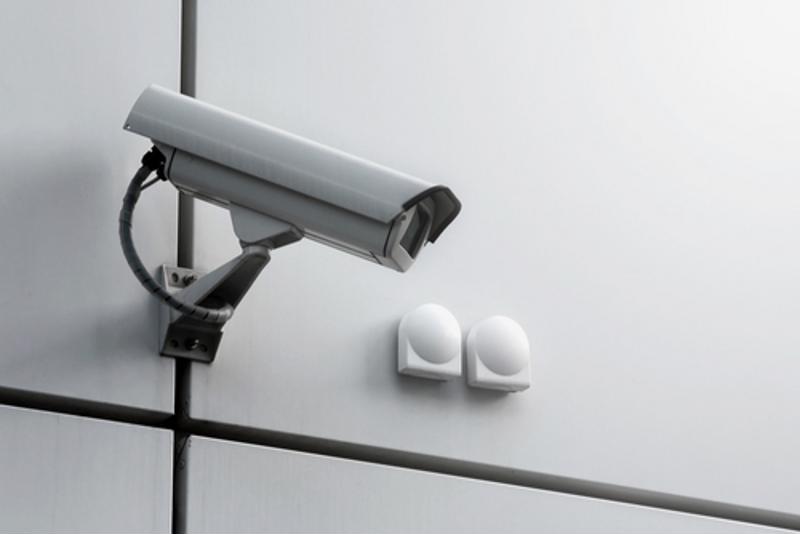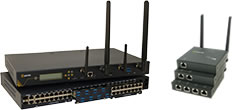
How grocery stores are using IoT to combat COVID-19
By Max BurkhalterJuly 28, 2020
The ongoing COVID-19 emergency has brought nearly every industry to a grinding halt, especially those that rely on brick-and-mortar stores to meet customers' needs. Businesses that were classified as "nonessential" have been forced to close their doors, but some companies have continued to operate despite the outbreak. While it's up to state legislatures and health officials to decide which businesses are considered essential, supermarkets and grocery stores have earned a near-universal pass from key decision-makers, according to guidance from the Cybersecurity and Infrastructure Security Agency. But as the global pandemic continues to disrupt everyday life for countless citizens, supermarkets are having to integrate new technologies to help prevent new infections, keep shelves stocked with products and improve the overall customer experience.
3 innovative use cases for supermarket IoT
Although social distancing guidelines vary between states, most grocery stores have asked patrons to wear appropriate face coverings and stay at least 6 feet away from other customers. According to a July article from Delish, at least 11 supermarket chains have already made face masks a requirement, including Target, Walmart and Whole Foods. Beyond these more general health measures, some grocery stores have begun integrating new technologies aimed at protecting customers and proactively controlling their inventories. Here are 3 innovative use cases for supermarket IoT that have captured the attention of major retailers:
1. Video analytics
Although most supermarkets have used video surveillance technologies for decades, some companies are repurposing these systems to improve their inventory management practices. Originally, security cameras would monitor customer behaviors to protect against theft. Now, large companies with a supermarket presence like Walmart and Amazon have started using RFID-equipped cameras to understand which products are in highest demand, IoT For All reported. When paired with advanced artificial intelligence, these surveillance systems can provide a wealth of information on popular products, pricing, consumer groups and more.
One of the biggest benefits of video analytics is the reduction of grocery stock-out and shrinkage. These issues are particularly costly for supermarkets, as many of their products are perishable, such as fresh produce and meat. As consumers' preferences have changed, however, grocery stores have started stocking more of these perishable goods - one 2018 survey commissioned by Universal Pure found that 60% of retailers are putting more refrigerated and fresh products on their shelves. By monitoring customers' buying patterns, supermarkets can better gauge how much fresh produce they need to purchase, and how sudden surges and dips in demand will impact their margins.

2. Autonomous cleaning robots
Alongside social distancing requirements, grocery stores are also being asked to implement rigorous cleaning schedules to help reduce the risk of contracting COVID-19. According to guidance released from The Food Industry Association, retailers must disinfect and sanitize frequently touched surfaces, including shopping carts, door handles, countertops, self-service areas and point-of-sale touchscreens. Of course, these tasks require considerable time and attention from employees, which can prevent customers from receiving the level of service they expect. To solve this problem, AT&T and Brain Corp have partnered together to develop autonomous robots that can clean and sanitize surfaces and monitor in-store activities, according to a press release on AT&T's website.
"Freeing up time for workers so they can focus on important duties like cleaning high-contact surfaces, restocking, and assisting customers has never been more important," said David Pinn, senior vice president of strategy for Brain Corp, in the aforementioned press release. "Our agreement with AT&T will enable Brain Corp to expand our robotic application portfolio for retailers and other businesses looking to adapt to today's changing world."
3. Contactless checkout kiosks
Contactless checkout kiosks have become increasingly popular over the past few years, as they've helped supermarkets increase shopping speeds and reduce the need for dedicated cashiers at the point of purchase, Biz Tech reported. During the pandemic, these self-service environments have offered customers a way to purchase essential food and cleaning products without having to directly interact with supermarket staff. That said, maintaining several contactless kiosks requires a good deal of IT investment and management capabilities. As noted by Chain Store Age, the high price tag for these systems partially explains why such deployments remain relatively niche, at least until recently.
The COVID-19 pandemic is serving as a valuable testing ground for these self-checkout systems by demonstrating how IoT can streamline the shopping process from end to end. However, before supermarkets can integrate this functionality, they first need to make sure their networking infrastructure can handle the massive amount of data these systems will generate. Luckily, Perle offers industrial-grade connectivity tools that can help grocery stores make the best use of cutting-edge technologies, including our robust console servers. Read some of our customers' stories to learn more.



